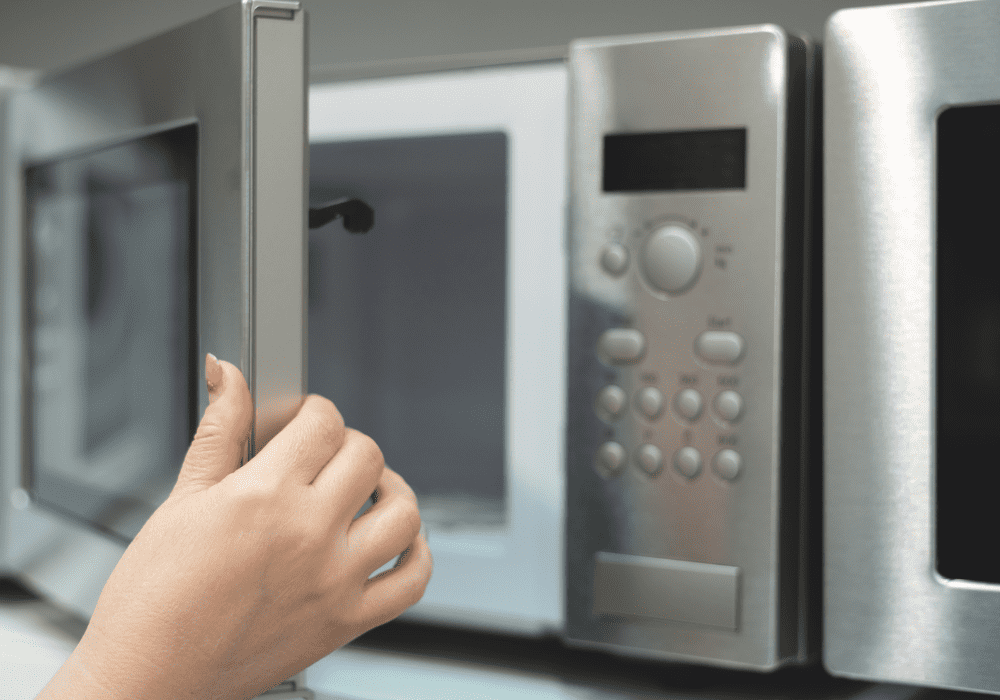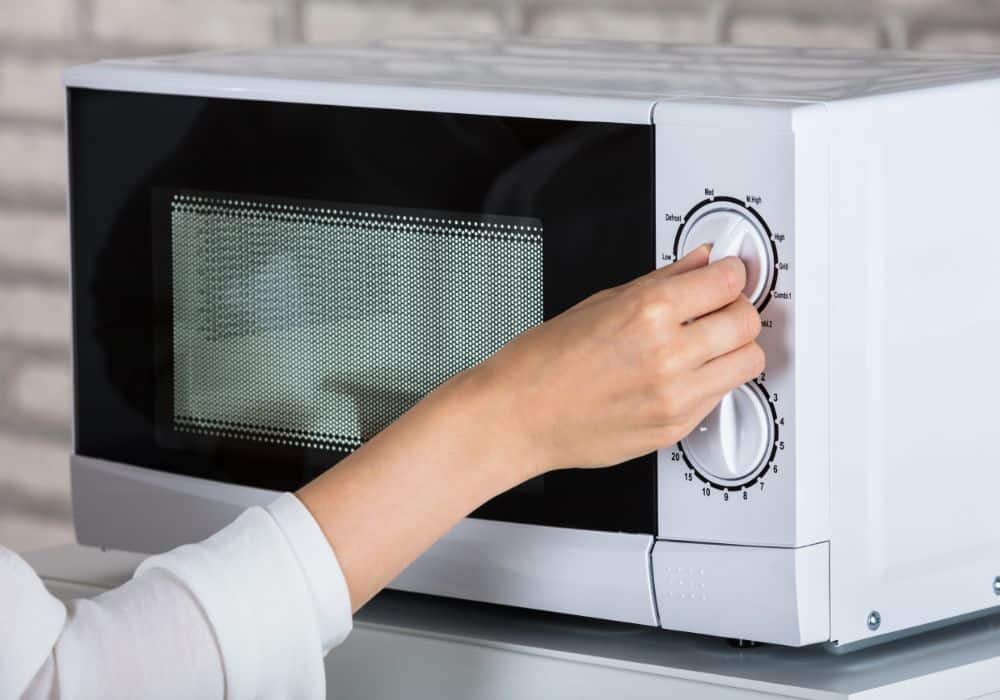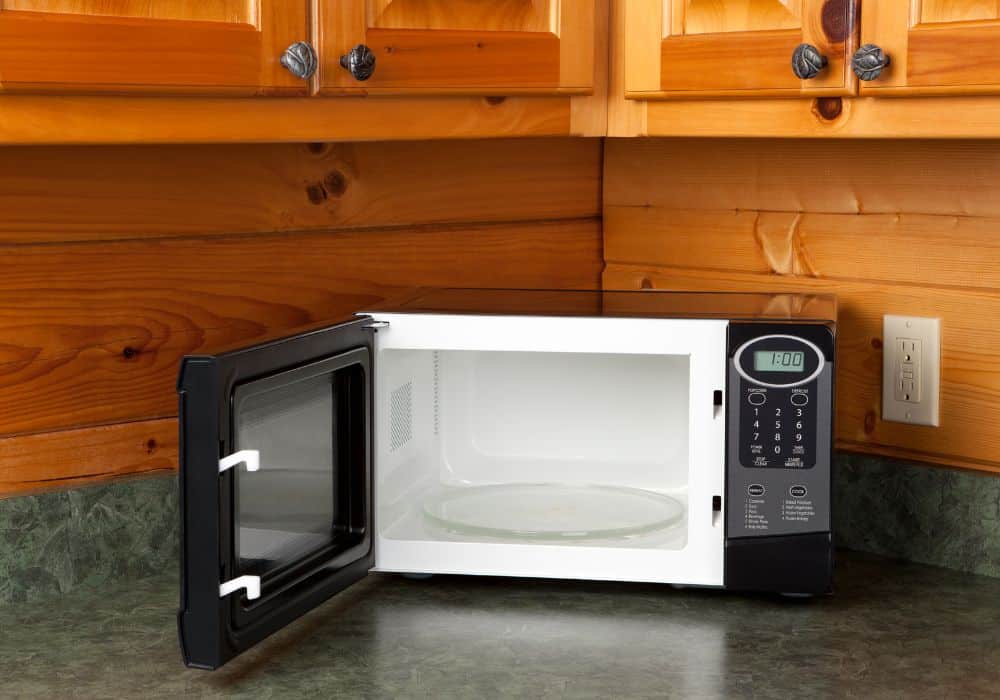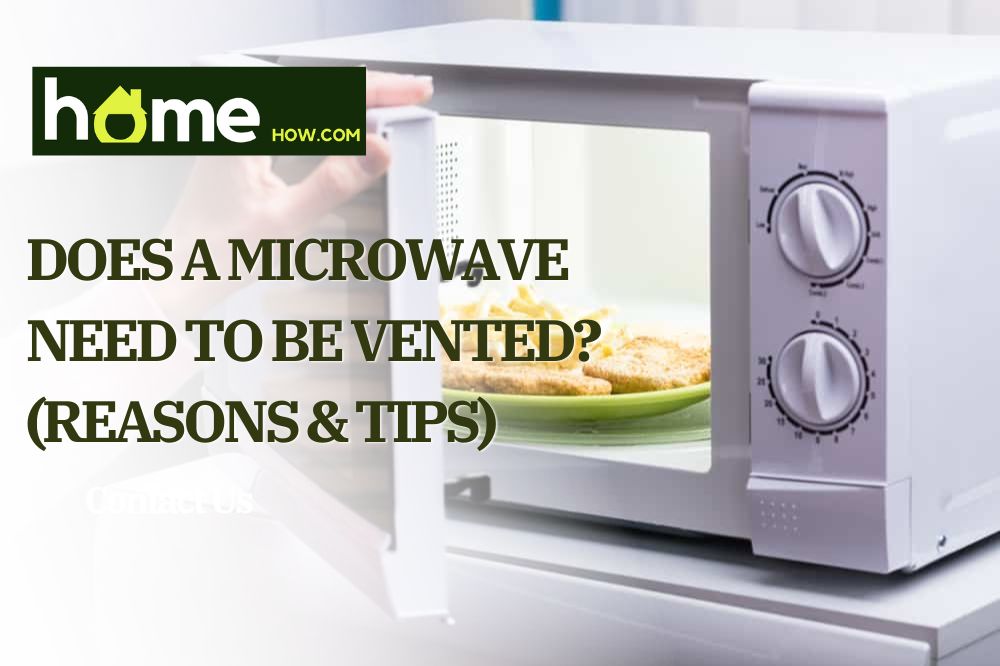The fact microwaves can fit into just about any space makes them very appealing. But if your microwave is too tucked away in the corner of your kitchen, you might be wondering does a microwave need to be vented.
If you’ve just purchased a new microwave or aren’t sure if your current one needs venting or not, we’ll clear up any confusion here!
Read on to find out more about venting a microwave in your home.
Do Microwaves Need to Be Vented?

When you think of microwaves, do you also think of fire, smoke, and danger? You wouldn’t be the only one. The internet is black with unverified tales of exploding microwaves and their reported propensity to start fires if not vented properly.
Much of the information on this topic is inaccurate. Microwave ovens are not inherently dangerous, nor are they likely to spontaneously combust.
However, all electrical appliances produce heat as a result of their operation, and because microwave ovens in particular generate a great deal of heat within a small space,
Microwave ovens produce heat as a result of the electrical current passing through the magnetron, which is the part of the microwave responsible for generating the energy emitted in microwaves. The magnetron also emits heat in the form of thermal radiation.
The inside of any microwave oven, including the walls and ceiling, will be hotter than boiling water. Depending on the model, the typical internal temperature of a microwave can be between 212°F (100°C).
It’s important that proper recirculation precautions be taken to ensure the safe operation of your microwave and prevent it from overheating.
Why Do Microwaves Need To Be Ventilated?
Venting a microwave has many benefits. All operating microwave ovens require a level of the ventilation system. Even though there are no open flames or hot surfaces, the heat produced by the microwave and the moisture released from food is enough to cause malfunction and efficiency issues. Ventilation exhausts any moisture created by cooking to prevent mold or other growth bacteria, and Additionally, it helps keep smells from permeating other areas of your home. It can also prevent sparks that can be caused by overheated electrical components.
If the microwave is not vented, it will naturally try to cool itself by transferring the excess heat to its surroundings. The interior walls of the microwave oven are usually made of metal, which is a very efficient heat conductor.
Therefore, the metal inside the oven will transfer the excess heat to whatever surface it’s in contact with, be it the wall of the cabinet it’s installed in, the mounting surface, nearby objects, etc.
Metal is an excellent conductor of heat, but a poor conductor of heat loss. This means that metal objects will rapidly draw heat away from the microwave, but will not let it go very quickly.
The net result is that the inside of the microwave will get hotter and hotter, and the surrounding areas will get hotter as well because there is nowhere for the heat to go.
What Happens If the Microwave Doesn’t Have Ventilation?

If the microwave is not vented, the excess heat will have nowhere to go but inside your kitchen, and the metal inside the microwave will continue to get hotter. If the inside of the microwave gets hot enough, the parts inside will start to melt, and possibly fuse together.
For example, if there is food stuck to the roof of the microwave, it could start to burn and fuse to the metal.
Because microwaves have a high surface temperature, they can cause serious damage if they are not properly ventilated. There have been CNN reports of people having serious burns to their fingers or other parts of their body by touching the interior of an unventilated microwave. The problem with an unventilated microwave is that excess moisture from your food can build up inside the microwave and drip onto the heating plate where it can start a fire.
What You Need to Keep in Mind
- When you’re installing a microwave, keep in mind that microwave ovens are high-temperature, high-wattage appliances that require ample space, adequate ventilation, and a ground-fault circuit interrupter (GFCI) outlet.
- If you install a microwave without taking these factors into consideration, you run the risk of fire, excessive cost, electrical shock, and/or property damage.
- You should also avoid storing food in your microwave that contains high levels of water or oil like soups and gravies. When there’s too much moisture in the air, it creates a breeding ground for bacteria and fungi that can lead to food poisoning and even burns.
- If you use an unventilated microwave, make sure to wipe down the interior of your microwave regularly with a damp cloth or paper towel to remove excess moisture buildup.
Do Over-The-Range Microwave Ovens Need to Be Ventilated?
OTR microwaves do not need to be vented in the same way as traditional countertop microwaves.
An over-the-range (OTR) microwave oven is specially designed to be installed above your kitchen stove, either above or below your cooktop. Because of their unique installation, OTR microwaves are generally larger than traditional countertop microwaves and require extra ventilation to ensure safe operation.
But OTR microwaves are typically installed with built-in ventilation systems to remove the heat produced by the microwave and any cooking odors that may be generated by the stove below. That is why OTR microwaves do not need to be vented in the same way as traditional countertop microwaves.
However, the NFPA (National Fire Protection Association) recommends that all appliances be vented in some way, regardless of their installation.
If you’re installing an OTR microwave, it’s best to consult the manufacturer’s installation instructions to see what they recommend for ventilation. There are many different types of range microwave venting options on the market, and they all have different requirements.
How Do You Vent an Over-The-Range Microwave?
While you may be tempted to just open a window and let the hot air out, this isn’t a safe or efficient way to vent a microwave.
The best way to vent an OTR microwave is to install a vent hood above it with a built-in fan. Many modern kitchens also opt for a ducted hood due to its versatility. Through duct hoods, the air is extracted from the kitchen through a pipe leading to an outside vent, preventing lingering odors.
Pro tip1: When installing a ventilation hood, be sure to locate it above the microwave and not in front of it. This way, any food particles that may fly out of the microwave and into the fan will land in the hood and be relatively easy to clean.
Pro tip 2: When installing a microwave, be sure to keep these safety and installation best practices in mind, and remember that it’s better to be safe than sorry.
Extended tips

- A microwave can emit levels of electromagnetic radiation- these are not harmful to us but it is best if you keep it as far away as possible from other electrical equipment, especially when you aren’t using it.
- When cooking in the microwave, ensure that the ventilation is open and there are no obstructions where the exhaust can build up. A well-vented microwave should have a minimum clearance of 3” at the top and the sides, with at least 1” at the rear.
- If your microwave has vents on the top, avoid placing a cover over the microwave when it is on to ensure proper airflow.
- When installing a countertop microwave you’ll want to make sure the mounting surface is capable of supporting the weight of the microwave. The best way to do this is to follow the mounting guidelines included in the instruction manual.
- Make sure the microwave has adequate space around it. Just like you don’t want to stand directly in front of an open oven door, you also don’t want to stand too close to the open door of a microwave oven.
Final Thoughts
The microwave is a convenient device for saving counter space and heating up meals without the need for any pots and pans or even a stove. But when used improperly, microwaves can be dangerous.
Since microwaves generate high amounts of heat, it’s important to use them safely to prevent overheating and potential fire hazards. If a microwave isn’t properly vented, it can overheat or even fuse together parts of it, causing a potential fire and/or injury.
There are several benefits associated with having your microwave ventilated, including preventing potential mold, preventing possible water damage, and even preventing mildew growth.
If you have an older microwave that doesn’t have adequate microwave ventilation, consider a replacement with a built-in microwave vent hood.
